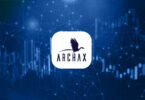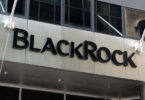Today Peter Golder, Chief Commercial Officer at the SIX Digital Exchange (SDX), outlined the digital asset exchange’s top priorities, talking during the Singapore Fintech Festival. The four asset classes on the roadmap for SDX are tokenized bonds, cryptocurrencies, private company equity and ESG funding. He cited a prediction that by 2027, ten percent of global GDP will be tokenized.
In September, Swiss regulator FINMA granted SDX licenses for both a trading venue and a central securities depository.
Now SDX is in the process of onboarding financial institutions to stand up the marketplace.
Golder mentioned cryptocurrency several times. First, as one of the assets that SDX plans to support. SDX’s Singapore joint venture with Japan’s SBI is focusing on the crypto sector. And when SDX canvased clients for potential opportunities, they highlighted challenges in entering the asset class.
Sandra Ro, CEO of the Global Blockchain Business Council, asked about growth trends envisioned for 2022. Golder stated one of two areas as, “Crypto where a lot of interesting ideas will become more institutionalized. There is a huge adoption on the institutional side that hasn’t yet taken place.”
Perhaps on a related note, his second trend was leveraging innovative business models for conventional domains. As an aside, certain other financial institutions are working on models that use decentralized finance, such as automated market making.
In terms of the assets that SDX is targeting, as a digital market infrastructure, it’s looking at sectors that may lack transparency so that new technology can add value. Hence the mention of private markets. And similarly, ESG financing usually requires monitoring which can be built into the overall solution.
Apart from the asset classes, Golder identified opportunities to make processes more efficient and effective. This includes more efficient use of capital, especially with Basel IV regulation on the horizon.
The challenge ahead
SDX leader Tim Grant left in August and was replaced by David Newns, formerly with State Street. Before his departure, Grant emphasized that getting a new marketplace like this off the ground is no easy task.
One of the issues is for assets to be interoperable between platforms. Otherwise, users won’t be keen to adopt it. While SDX uses R3’s Corda enterprise blockchain, it’s a Hyperledger and Enterprise Ethereum Alliance member as well. Plus, it’s a participant in GBBC’s InterWork Alliance for tokenization standards.
Golder highlighted the importance of the ecosystem, and the need to both cooperate and compete. “We need to collectively make sure that we have a way to communicate with each other, work with each other, have the platforms talk to each other,” he said.
Talking about co-opetition, he said it’s “a core building block and component of how we make this industry and the adoption of DLT go faster.”






